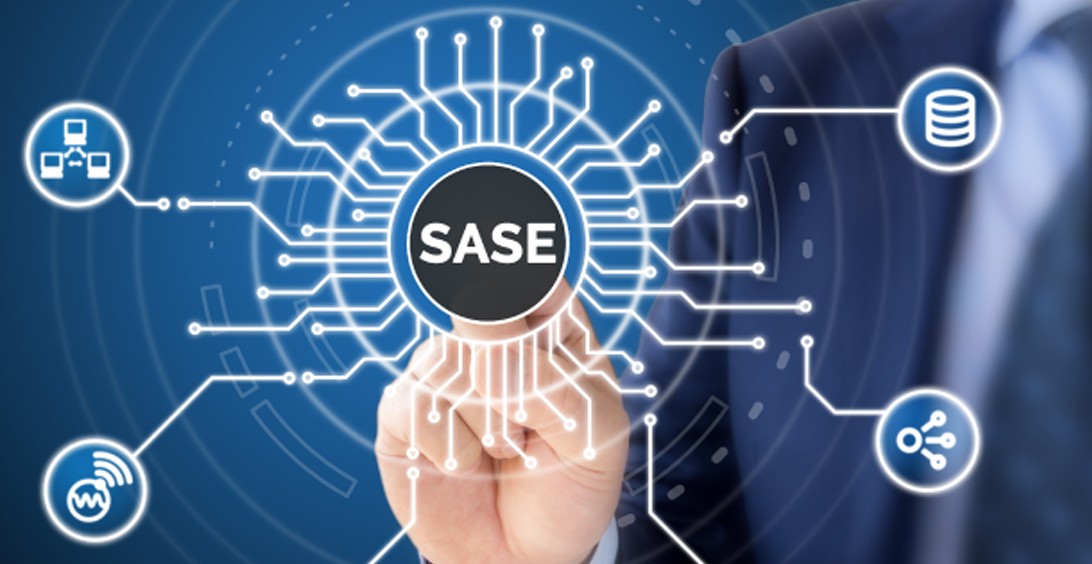The Future of Cybersecurity: Exploring the Benefits of SASE Solutions – Cybersecurity has ascended the corporate ladder to become a key strategic priority as the digital landscape evolves at a breakneck pace. With cyber threats growing in number and sophistication, the necessity for advanced solutions to safeguard digital assets is paramount. One such solution that stands at the confluence of innovation and functionality is Secure Access Service Edge (SASE). This article explores the burgeoning domain of SASE and its implications for the future of cybersecurity.
A clear example of the rapid progression in this space is Fortinet’s SASE solutions in China, which demonstrate a significant leap in providing integrated network security services through a single, cloud-based platform. This approach simplifies the security landscape for organizations and offers enhanced agility in a rapidly evolving digital world.
Key Takeaways:
- SASE signifies a major shift in cybersecurity, merging network security and WAN capabilities.
- It facilitates secure, global access to resources essential for today’s mobile and remote workforce.
- Investing in SASE translates into improved business agility, cost-effectiveness, and compliance with regulatory standards.
- With its scalable nature, SASE is poised to become the go-to architecture for future-proofing enterprise networks against emerging threats.
Table of Contents:
- Understanding SASE and its Position in Cybersecurity
- The Journey to Adopting SASE
- Real-World Business Benefits of SASE Solutions
- Tackling the Challenges of SASE Implementation
- SASE: A Forward-Looking Approach
- Regulatory Compliance and SASE
- SASE from a Global Perspective
- Choosing the Right SASE Provider
- Architectural Considerations for SASE
- Forging Ahead: The Long-Term Outlook for SASE
Table of Contents
Understanding SASE and its Position in Cybersecurity
With a surge in remote work dynamics, the limitations of conventional network security have been pushed to the forefront, ushering in SASE as an innovative solution. SASE, which stands for Secure Access Service Edge, is a holistic approach integrating network and security functions to provide secure and fast cloud connectivity. This cybersecurity model is uniquely poised to cater to the demands of an increasingly remote and mobile workforce, granting access to network resources with granular, identity-driven policies.
The Journey to Adopting SASE
Transitioning to SASE is a journey that involves a paradigm shift from traditional perimeter-based security models to one that is flexible, scalable, and user-centric. This cloud-driven approach enables organizations to support a distributed workforce while ensuring consistent security standards across all access points. The adoption of SASE reflects an organization’s commitment to modernizing its security apparatus to meet challenges head-on.
Real-World Business Benefits of SASE Solutions
The tangible benefits of deploying SASE are manifold. Primarily, it amplifies business agility – the newfound ability to quickly adapt to market changes becomes a key competitive advantage. Cost efficiency is another critical benefit as SASE eliminates the need for traditional hardware-centric approaches, reducing operational complexities and expenditures. Additionally, its scalable nature ensures that as an enterprise grows, its network security can grow without significant infrastructure investments, ensuring the longevity and competitiveness of security strategies.
Tackling the Challenges of SASE Implementation
Despite its benefits, the shift towards SASE is challenging. Organizations often grapple with the cultural and technological changes required for its implementation. Concerns over the re-architecting of networks, the learning curve for IT teams, and the need to manage potential data security risks during the transition. Addressing these challenges requires a methodical approach and a keen understanding of the existing IT infrastructure and the end-state SASE model.
SASE: A Forward-Looking Approach
SASE is not just another security solution but a future-oriented cybersecurity paradigm. It’s built with the recognition that organizational resources are increasingly cloud-based and that employees need secure access regardless of location. By leveraging the principles of a zero-trust network, SASE ensures that every access request is fully authenticated, authorized, and encrypted, paving the way for a resilient and adaptable cybersecurity infrastructure that is prepared for future challenges and changes in how we work.
Regulatory Compliance and SASE
Data protection and privacy have become globally significant, bringing regulatory compliance to the forefront of enterprise cybersecurity strategies. SASE elegantly aligns with this trend by enabling organizations to monitor and manage data across their networks efficiently, simplifying compliance with regulatory standards such as GDPR, HIPAA, and CCPA.
SASE from a Global Perspective
Cybersecurity is a global issue, and SASE’s cloud-native capabilities are causing its adoption to flourish worldwide. It provides an adaptable framework that meets diverse regulatory, cultural, and technological requirements across borders, demonstrating its global applicability and efficacy in securing enterprises in any region. As highlighted by industry experts, insights on the adoption of SASE show its growing prominence and the value it brings to businesses worldwide.
Choosing the Right SASE Provider
With the SASE market expanding, selecting the right SASE provider becomes pivotal for successful implementation. An ideal SASE provider should offer a blend of peak performance, exemplary customer support, and have a record of enduring commitment to innovation. The vendor’s ecosystem, which fosters interoperability and support, is also essential when evaluating potential SASE providers.
Architectural Considerations for SASE
To effectively leverage SASE solutions, architectural considerations must be meticulously planned. It involves a comprehensive understanding of the existing infrastructure, identification of gaps, and development of a roadmap that incorporates SASE seamlessly into the current setup. The architecture should support present requirements and be flexible enough to adapt to future technological advancements, ensuring its long-term viability.
Forging Ahead: The Long-Term Outlook for SASE
As enterprises strive to stay ahead in the cybersecurity race, SASE stands out as a forward-thinking strategy that promises to withstand the test of time. With its unified approach to networking and security, scalability and agility, SASE is set to become an enduring element of the cybersecurity ecosystem. Organizations that adopt this proactive approach will find themselves well-equipped to face the cybersecurity challenges of today and tomorrow.
